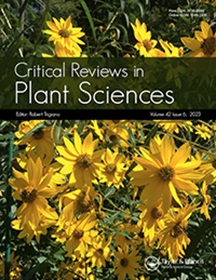Omics advances and integrative approaches for the simultaneous improvement of seed oil and protein content in soybean (Glycine max L.)
IF 6
2区 生物学
Q1 PLANT SCIENCES
引用次数: 12
Abstract
Abstract Genetic improvement of soybean, one of the major crops providing edible oil and protein-rich food, is important to ensure balanced nutrition for the growing world population. To make soybean cultivation more rewarding, an increase in seed oil and protein content is most desirable. Here, a critical review of the efforts employed over a half-century to accomplish the improvement of soybean oil and protein content has been presented. Many studies have used diverse parental lines to map and characterize quantitative trait loci (QTL)/genes regulating these two essential traits. Here, we highlighted such genomic loci that were consistently identified with different mapping approaches, like QTL mapping, genome-wide association studies (GWAS), and meta-QTL analysis. In addition, the information generated through efforts utilizing omics approaches, such as genomics, transcriptomics, and proteomics has also been compiled to anticipate the molecular mechanism. Several innovative approaches like multi-parental mapping, induced mutagenesis, genomic selection, transgenics, and genome-editing have been discussed in terms of effective utilization of technological advances to improve the oil and protein content in soybean. Information provided here will be helpful for better understanding and designing an effective strategy for simultaneous improvement in seed oil and protein content in soybean.组学研究进展及同时提高大豆籽油和蛋白质含量的综合方法
摘要大豆是提供食用油和富含蛋白质食物的主要作物之一,对其进行遗传改良对于保证不断增长的世界人口的营养均衡具有重要意义。为了使大豆种植更有回报,最理想的是增加种子油和蛋白质含量。在这里,对半个多世纪以来为实现豆油和蛋白质含量的提高所做的努力进行了批判性的回顾。许多研究使用不同的亲本系来定位和表征这两个重要性状的数量性状位点/基因。在这里,我们强调了这些基因组位点是通过不同的定位方法,如QTL定位、全基因组关联研究(GWAS)和meta-QTL分析一致确定的。此外,利用基因组学、转录组学和蛋白质组学等组学方法所产生的信息也被用于预测分子机制。本文讨论了多亲本定位、诱导诱变、基因组选择、转基因和基因组编辑等创新方法,以有效利用技术进步提高大豆的油脂和蛋白质含量。本文所提供的信息将有助于更好地了解和设计同时提高大豆籽油和蛋白质含量的有效策略。
本文章由计算机程序翻译,如有差异,请以英文原文为准。
求助全文
约1分钟内获得全文
求助全文
来源期刊
CiteScore
12.90
自引率
1.40%
发文量
15
审稿时长
>12 weeks
期刊介绍:
Critical Reviews in Plant Sciences focuses on presenting in-depth and up-to-date reviews of timely and/or cutting-edge subjects in the broad discipline of plant science, ranging from molecular biology/biochemistry through the areas of cell biology, plant pathology and physiology, genetics, classical botany, and ecology, to practical agricultural applications. Articles in the journal provide an up-to-date literature base for researchers and students, pointing the way towards future research needs. The journal is also a significant source of credible, objective information to aid decision makers at all levels.

 求助内容:
求助内容: 应助结果提醒方式:
应助结果提醒方式:


